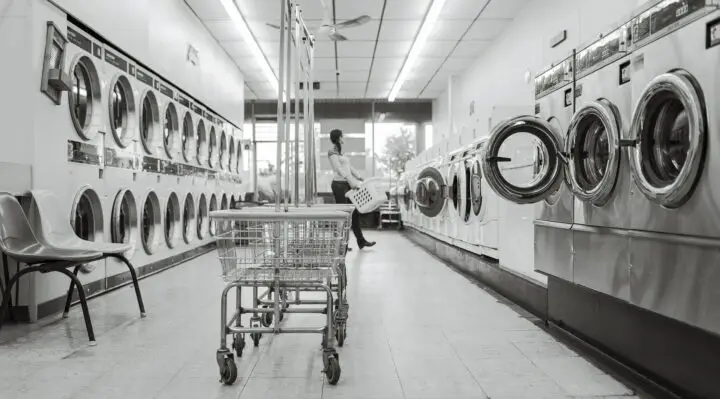If your Asko washing machine will not drain, this detailed guide will list the possible causes and provide steps to fix this issue…

Table of Contents
Asko Washing Machine Will Not Drain — How To Fix
If your Asko washing machine will not drain, the following are issues to look for…
1. Clogged Pump Filter
If your Asko washing machine will not drain, it could be as a result of a clogged filter. Follow the steps below to clean this…
Step 1. It is advised that you disconnect your appliance from the power outlet before starting this repair, in order to prevent electrocution.
Step 2. Using a flat-blade screwdriver if needed, pry the lower front access panel open.
Step 3. Place a small container underneath the emergency drain tube. Pull the cap off the tube, then let any water stuck in the machine drain out.
Step 4. With all the water drained out, put the hose’s cap back on. Rotate the pump filter knob, then pull it out (some water may spill).
Step 5. Take the filter to a sink, then clean out any debris that may have accumulated. Once the filter is clean, push it back into place.
Step 6. Close the lower front access panel. Reconnect your machine to the power outlet, then ensure that the problem has been fixed by running a wash cycle.
If your Asko washing machine will not drain after this, the following may be the issue…
Check out these other articles…
KitchenAid Washing Machine Door [6 Issues & Proven Solutions]
KitchenAid Washing Machine Filter [3 Issues & Quick Solutions]
KitchenAid Washing Machine Is Stuck On Rinse [4 Causes & Quick Solutions]
KitchenAid Washing Machine Is Making Noise [8 Causes & Proven Solutions]
Asko Washing Machine Is Making Noise [4 Problems & Quick Solutions]
Zanussi Washing Machine Bearings [Issues & Proven Solutions]
Zanussi Washing Machine Is Not Draining [2 Problems & Quick Solutions]
2. Damaged Drain Pump
Your Asko washing machine will not drain if the pump assembly is faulty. Follow the steps below to replace this part…
Step 1. Ensure that your machine is disconnected from the power outlet before starting this repair, in order to prevent electrocution.
Step 2. Loosen the bolts at the back of the machine securing the top panel using a Torx-20 screwdriver. Slide the panel backwards a few inches, then lift it off the cabinet.
Step 3. Use a flat-blade screwdriver to help pry the control panel locking tabs. Lift the panel off the mount, then set it on the cabinet.
Step 4. Pry the lower front access panel open. Place a small dish underneath the emergency drain hose. Pull the cap off the hose, then drain out the water stuck in the machine.
Step 5. With all the water drained out, push the hose’s cap back on. Tip your machine backwards carefully, then place a support underneath (get someone to help you if needed).
Step 6. Loosen the bolts at the bottom of the front panel using your screwdriver. Take the support out from underneath the machine, then carefully lower the appliance.
Step 7. Loosen the bolts at the top of the front panel. Carefully lift the front panel off the cabinet, then set it aside.
Step 8. Using a pair of pliers, release the retaining clamps securing the sump hose and outlet hose to the pump assembly. Detach each hose from the drain pump (some water may leak, so keep a rag nearby).
Step 9. Detach the wire harness connected to the pump assembly. Pry the pump off the mounts on the cabinet, then set it aside.
Step 10. Prepare your new washing machine pump for installation by unpacking it. Transfer the gasket from the old pump to the new one.
Step 11. Install the new pump in the cabinet, then snap it into place. Plug the wire harness into the new pump.
Step 12. Attach each hose to its appropriate port on the new pump. Secure the hoses by sliding the retaining clamps into place.
Step 13. Lift the front panel carefully, then mount it on the cabinet. Secure the panel by applying the bolts at the top.
Step 14. Tip the machine backwards carefully, then place a support underneath. Use your Torx screwdriver to apply the bolts at the bottom of the panel.
Step 15. Take the support out from underneath the machine. Set your washer back onto its feet.
Step 16. Close the pump filter access panel. Snap the control panel back onto the front of the cabinet.
Step 17. Remount the top panel on the cabinet. Secure the panel by applying the Torx screws at the back.
Step 18. Plug your washing machine’s power cord into the outlet, then try running a wash cycle to ensure that the issue has been fixed.